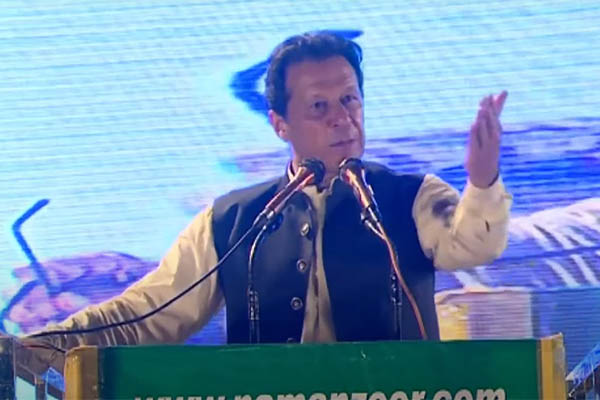
File photo of Imran Khan
After failing to compel the ruling alliance to vacate and allow him to rule Pakistan, Pakistan Tehreek-e-Insaf (PTI) Chairman Imran Khan has decided to quit the two assemblies under his control, while continuing to threaten to become more “dangerous,” as his rivals seem unable to penetrate the popular support he enjoys nationwide. The only thing going against him is the Pakistan Army refusing to facilitate his return, which the new Army chief will likely consolidate further.
The establishment’s “Project Imran”—acknowledged in hints and veiled references by both the outgoing Army chief and Khan himself—led the then-opposition to accuse the PTI of emerging victorious in the 2018 general elections due to rigging. Regardless, after assuming power, Khan struggled to achieve even a fraction of his campaign promises, offending both China and the U.S., which in turn soured his relationship with the Army. The “same page” mantra oft-repeated by the PTI to describe its ties with the establishment subsequently fell by the wayside, culminating in October 2021, when then-P.M. Khan refused to approve the military’s nominee for the crucial post of Inter-Services Intelligence (ISI) chief. Even after he backed down, abandoning efforts to retain his preferred Lt. Gen. Faiz Hameed, the damage had been done.
Khan, now out of power at the center, is threatening to force early elections by dissolving the assemblies in Punjab and Khyber-Pakhtunkhwa—while still retaining his control over Gilgit-Baltistan and Azad Kashmir. The ruling coalition is not too pleased, as it knows the tide of public opinion is currently against it, thanks to rampant inflation and an economy in persistent decline. What Pakistan faces now is a period of great instability where the political process will be replaced by concerns of national security, even as a near-bankrupt economy raises fears of civil unrest. The world, willing to help after this year’s devastating floods, is no fan of the political uncertainty and may cut its risks and look away from a Pakistan returning to Khan’s control.
Despite Khan’s claims of “unprecedented public support,” he was only able to attract a little over 40,000 Pakistanis to the conclusion of his long march at Rawalpindi, close to General Headquarters. This is nothing to scorn, as his rivals would likely struggle to attract even this many on their call. For now, Khan’s popularity is sufficient to retain most of the lower-echelon leaders of the PTI, as his brand of agitation politics keeps him relevant among the public. Admittedly, a lot can happen between now and the next general elections—due after August 2023—but as things stand now, it is highly probable that Khan will be able to secure a new majority, as the public looks for change amidst a tanking economy. Barring any unforeseen development, the incumbent government has nothing to counter his popularity and should prepare for another round in the opposition.
